Microsoft today released Windows 11 Build 26040 to Insiders in the Canary channel. It comes with a huge number of new features and improvements. You will find a new UI in the setup program, a new Task Manager icon, Narrator and screen casting issues, a new compression wizard for picking the archive format, Voice Clarity for more devices, and much more!
Advertisеment
What's new in Windows 11 Build 26040 (Canary)
Instant access to new photos and screenshots on your smartphone
Microsoft is rolling out a new feature that allows you to quickly access and edit recent photos and screenshots taken on your Android smartphone using the Snipping Tool in Windows 11. When you take a new photo or screenshot on your smartphone, you will see a notification to process the new media.
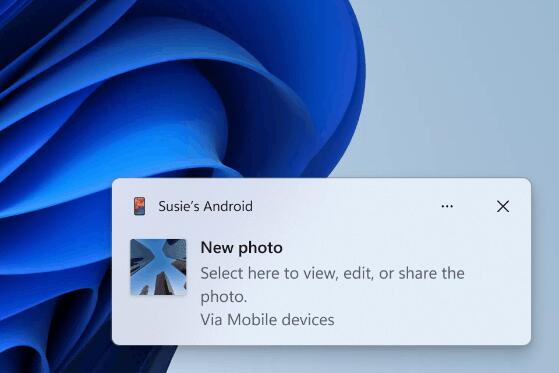
To enable this feature, go to Settings -> Bluetooth & Devices -> Mobile Devices, available starting in builds 26016 (Canary) and 23606 (Dev). There, select "Manage devices" and allow the computer access to an Android smartphone. After this, the Cross Device Experience Host package required for this feature, will automatically be downloaded from the Microsoft Store.
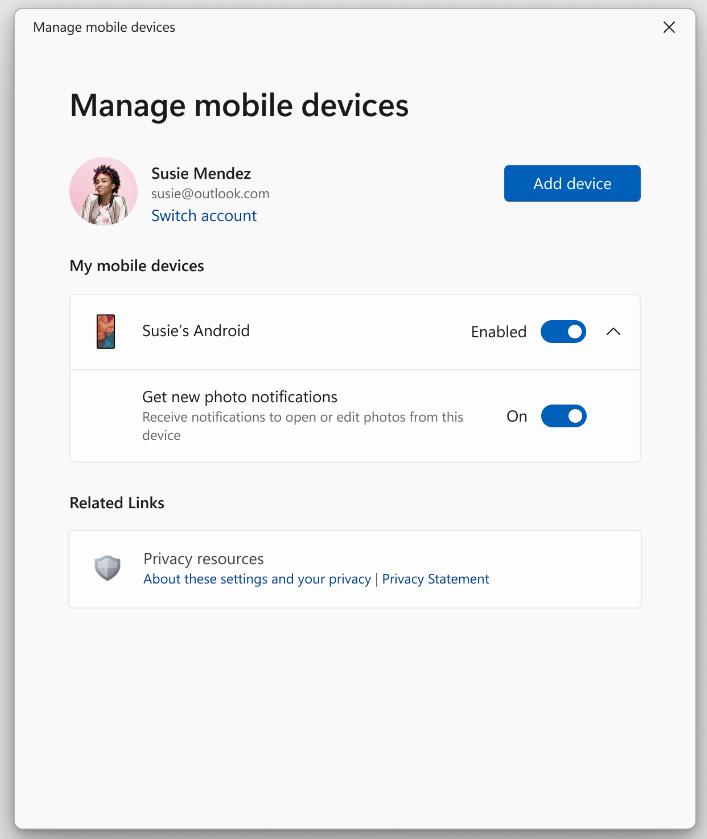
Experience crystal clear online communication with Voice Clarity
Microsoft is now expanding this feature, previously available only on Surface devices, to a wider audience. Voice Clarity utilizes cutting-edge AI technology to optimize your audio experience on Windows. By employing low complexity AI models, it actively eliminates echo, suppresses background noise, and diminishes reverberation in real-time.
It seamlessly integrates with applications that employ Communications Signal Processing Mode, such as Phone Link and WhatsApp, and is enabled by default. No additional hardware is necessary, as Voice Clarity is compatible with both x64 and Arm64 CPUs.
Applications utilizing Communications Signal Processing Mode will automatically benefit from Voice Clarity if their respective OEM devices lack Communications Mode processing capability.
Furthermore, online gaming experiences that incorporate Communications Signal Processing Mode will also see improvements with Voice Clarity. For customizable control, applications can include a toggle for the Deep Noise Suppression stream effect. This allows users to switch between AI models for voice-only communication (with Deep Noise Suppression enabled as the default setting) and generic audio content (with Deep Noise Suppression disabled).
With Voice Clarity, you can confidently express yourself during online meetings and enjoy smoother and more impactful online communication.
Updated Windows Setup UI
Windows OS Media Setup has received a simplified and more modern design. It retains all the traditional features available when you clean installation of the operating system. But it will now be consistent with the current upgrade and installation experience available for the devices already running the Windows OS.
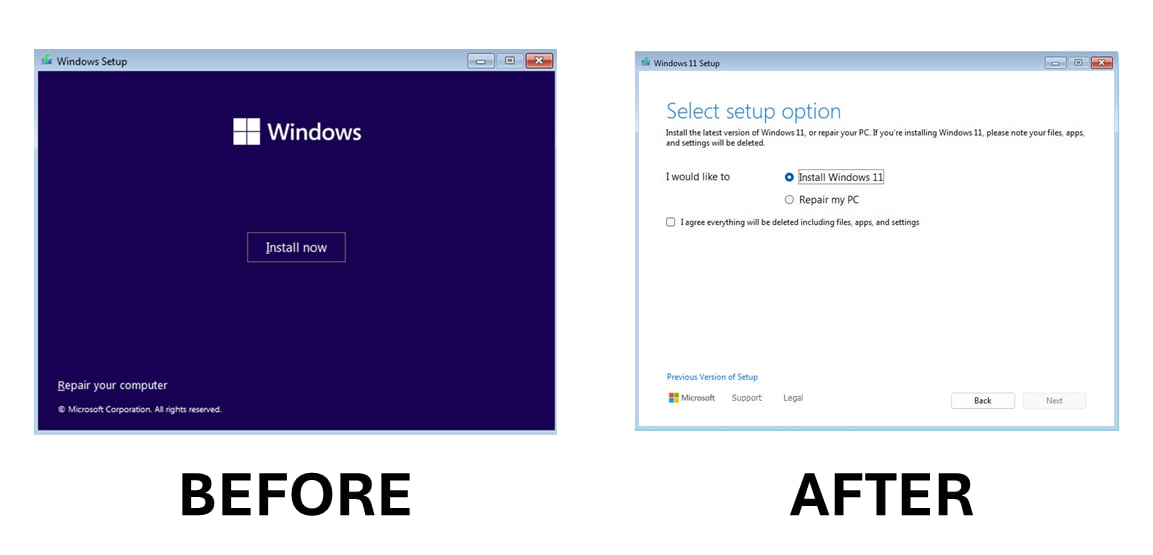
Windows Insiders who want to try out the updated Windows Installer can download the ISO files for Build 26040 from the official site and perform a clean install on their PC or virtual machine (VM).
It's important to note that these changes do not affect OS deployments using DISM, but they may impact some workflows. Microsoft encourages Windows Insiders to take the time to test these changes in their scripts and provide feedback.
USB 80Gbps
This newest build adds support for the latest USB standard, USB 80Gbps. It will initially available on specific devices powered by the Intel Core 14th Gen HX-series mobile processors, like the cutting-edge Razer Blade 18.
Bringing forth the first significant update to the USB4 standard, this advancement doubles the performance to a whopping 80Gbps from the previous 40Gbps. With this upgrade, users can expect enhanced performance in high-performance displays, storage, and connectivity, ushering in the next generation of technology.
Moreover, this USB 80Gbps support remains fully compatible with older USB and Thunderbolt peripherals, allowing seamless integration with a wide range of devices. It effortlessly integrates with all other USB Type-C features, providing a comprehensive and versatile experience.
Improvements for viewing images with Narrator
In an effort to continually improve the Windows experience, the company is introducing significant improvements to the visual experience with Narrator. Key changes include:
- Now in scan mode (Narrator key + <Space>), you can easily move between images/graphs using the "G" key to move forward and "Shift + G" to move backward. This provides a more intuitive and faster way to navigate through images.
- Narrator now more accurately recognizes text in images, including handwritten text. The compilation of image descriptions has also been improved. You can try out advanced features by going to an image and pressing Narrator + CTRL + D. This feature requires an active Internet connection. The feature also requires that the setting to receive image descriptions be turned on.
Improving discoverability of screen casting in Windows 11
Casting from your Windows PC allows you to wirelessly extend your display to another nearby PC, TV, or other external displays. We are introducing improvements that focus on educating users about the Cast feature and improving its discoverability in Windows 11. Those improvements include:
- When you work with multiple windows on your PC, such as when you frequently switch between them to perform different tasks, or when you use the Snap Layouts feature to organize your screen space, you will receive a pop-up notification asking you to use the screen projection feature.
- Updated the Cast flyout in the Quick Settings menu. It now includes a link to Microsoft's support page, which will come in handy if you're having trouble detecting nearby displays, troubleshooting connection errors, or other issues.
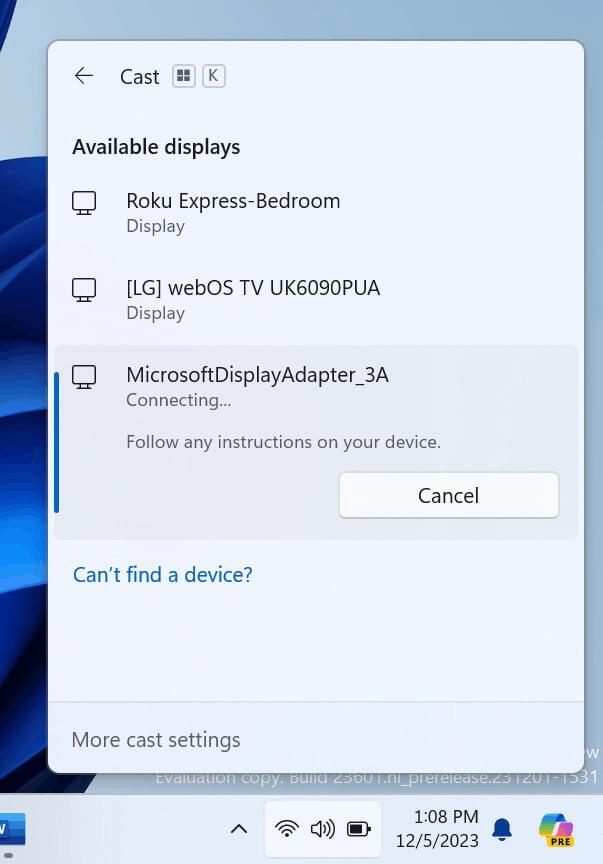
Windows LAPS: New automatic account management feature
Windows Local Administrator Password Solution (LAPS) adds new automatic account management functionality, giving IT administrators the ability to automatically create a managed local account. This improves the access control process and improves system security. It allows you to customize the account name, enable or disable it, and also set a custom account name to increase security. Integration with existing Microsoft local account management policies has also been improved.
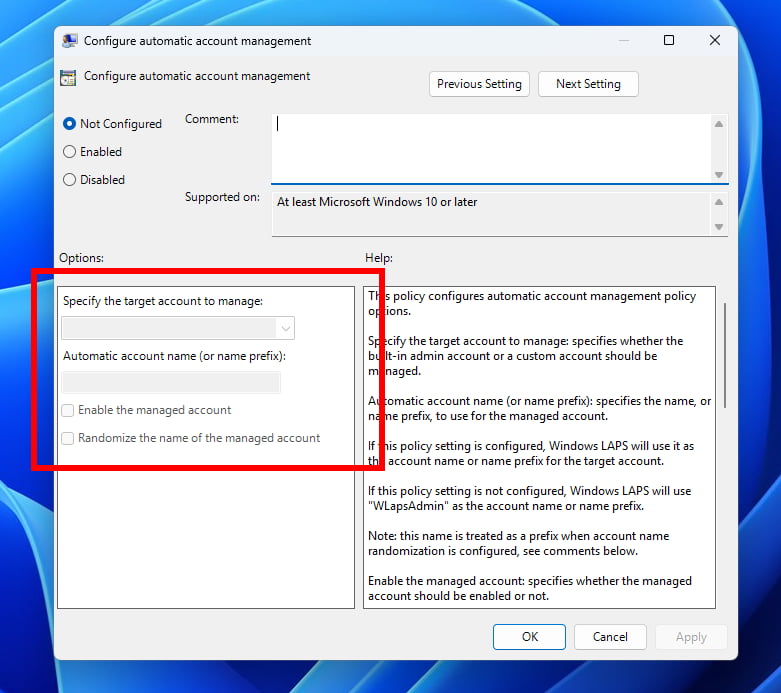
Full support for these settings is provided through the Windows LAPS CSP, and the documentation for this CSP will be updated soon to reflect these changes. More information about the new features can be found at this link .
Windows LAPS: changes to the password dictionary
The Windows Local Administrator Password Solution (LAPS) has been improved with the introduction of a new PasswordComplexity setting. This setting gives IT administrators the ability to configure Windows LAPS to create less complex passwords. The new setting is similar to the existing difficulty setting 4 in that it uses all four character categories (uppercase, lowercase, numbers, and special characters). However, setting PasswordComplexity to 5 eliminates the most confusing characters, resulting in better password readability, reducing confusion and saving time. For example, the number "1" and the letter "I" are no longer used.
Setting PasswordComplexity to 5 makes the following changes to the default password dictionary character set:
- Letters excluded: 'I', 'O', 'Q', 'l', 'o'.
- Digits excluded: '0', '1'.
- "Special" characters excluded: ', ', '.', '& ', '{', '}', '[', ']', '(', ')', '; '.
- "Special" characters included: ': ', '=', '? ', '*'.
The Windows LAPS tab in Active Directory Users and Computers (via the Microsoft Management Console) has also received improvements. When the Windows LAPS password is now displayed in clear text, a new font is applied to improve readability.
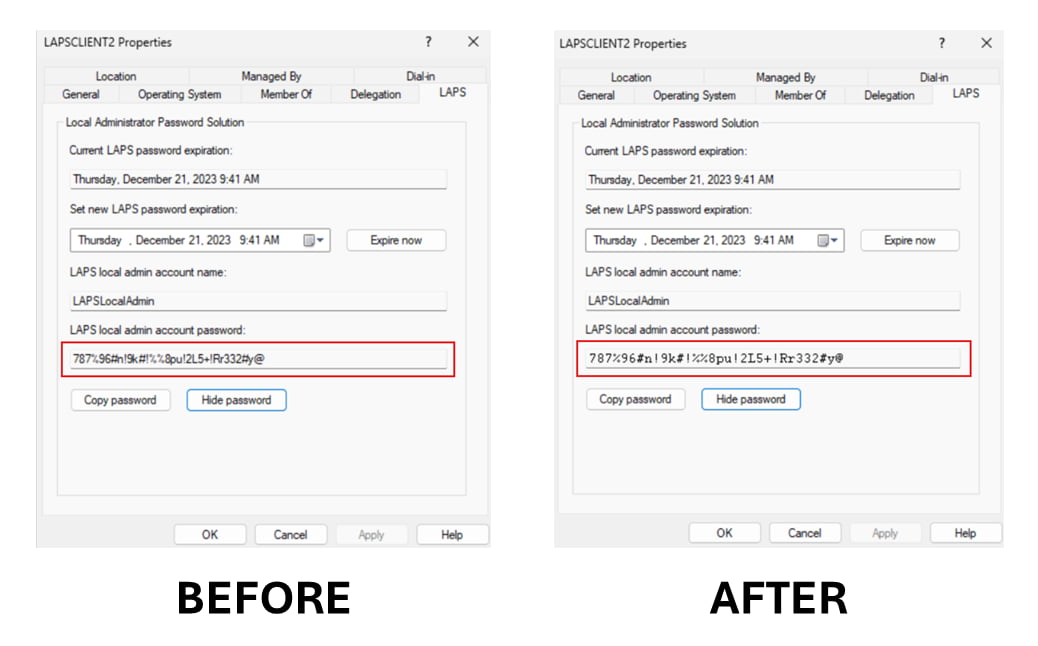
Windows LAPS CSP offers full support for configuring the new PasswordComplexity (5) parameter. The Windows LAPS documentation will be updated soon to provide more information about this new setting.
Windows LAPS: Passphrases
Windows Local Administrator Password Solution (LAPS) has been enhanced with the introduction of a new passphrase feature. IT administrators can now configure Windows LAPS to generate passphrases such as "EatsVeganYummyTasty." Compared to a more traditional password style such as "q6Rgag667Pu23qA886? n:K", the passphrase is easy to read, easy to repeat and easy to enter.
Using the new feature, you can configure an existing PasswordComplexity policy setting to select one of three lists of passphrase words. All three lists are included with Windows and do not require additional downloads. The PassphraseLength policy setting controls the number of words in the new passphrase.
Creating a passphrase is simple: a given number of words are selected randomly from a specified list and combined. The first letter of each word is capitalized for ease of reading.
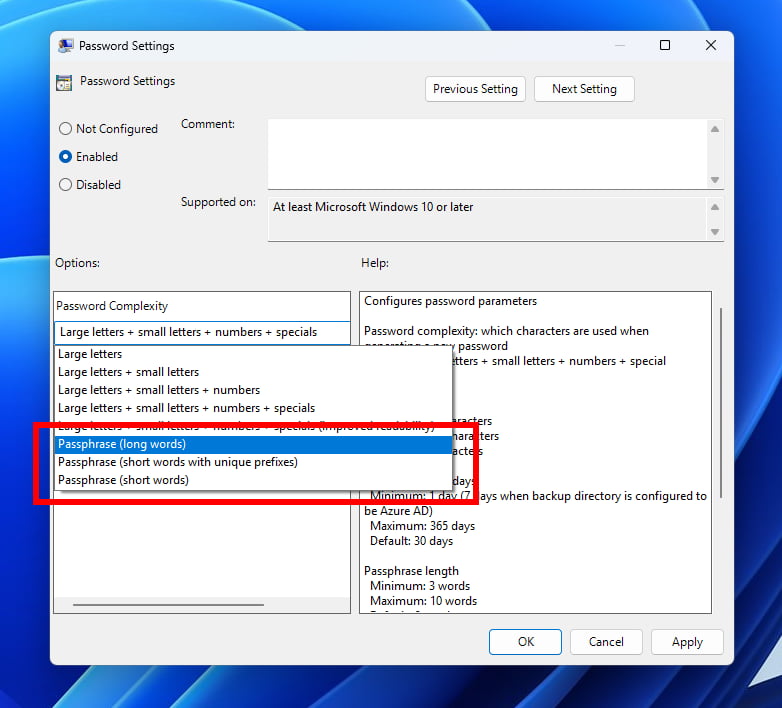
New PassphraseLength policy setting:
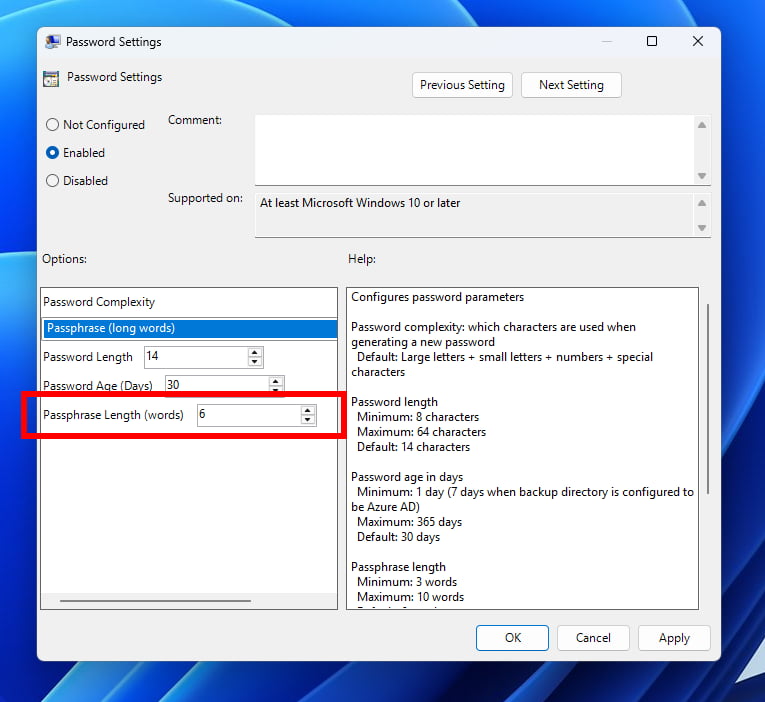
The new passphrase feature is fully integrated into the process of backing up passwords in Windows Server Active Directory or Microsoft Entra ID.
Wordlists for passphrases were taken from the article " Deep Dive: EFF's New Wordlists for Random Passphrases " by the Electronic Frontier Foundation and are used under a CC-BY-3.0 Attribution license. Word lists can be downloaded from https://go.microsoft.com/fwlink/?linkid=2255471 .
The three new PasswordComplexity passphrase options match one of the Electronic Frontier Foundation's original word lists.
Windows LAPS does not support custom word lists or customization of built-in word lists.
Windows LAPS CSP provides full support for managing these settings. The Windows LAPS CSP documentation will be updated shortly to reflect any changes.
More information about the new Windows LAPS passphrase feature is available on the official website .
Windows LAPS: Image Rollback Detection Feature
Windows Local Administrator Password Solution (LAPS) has been improved with the introduction of a new image rollback detection feature. This feature allows Windows LAPS to automatically detect when an operating system image has been rolled back. When a live OS image is restored (for example, using Hyper-V snapshot rollback or using image recovery products), a "broken state" situation occurs in which the password stored in Active Directory no longer matches the password (hash) stored locally on the device. In these situations, the administrator cannot log into the device using the saved Windows LAPS password. The problem remains unresolved until Windows LAPS resets the password to its normal expiration date, which can take days or even weeks.
The new feature introduces the Active Directory attribute "msLAPS-CurrentPasswordVersion" into the Windows LAPS schema. This attribute contains a random GUID that Windows LAPS writes each time a new password is saved in Active Directory and locally. Each processing cycle, the GUID stored in msLAPS-CurrentPasswordVersion is checked and compared to the local copy. If they are different, the password is changed immediately.
To enable this feature, you must first run the latest version of the PowerShell command Update-LapsADSchema. Windows LAPS will detect the new attribute and begin using it.
Windows LAPS will log the specific reason for the rollback detection:
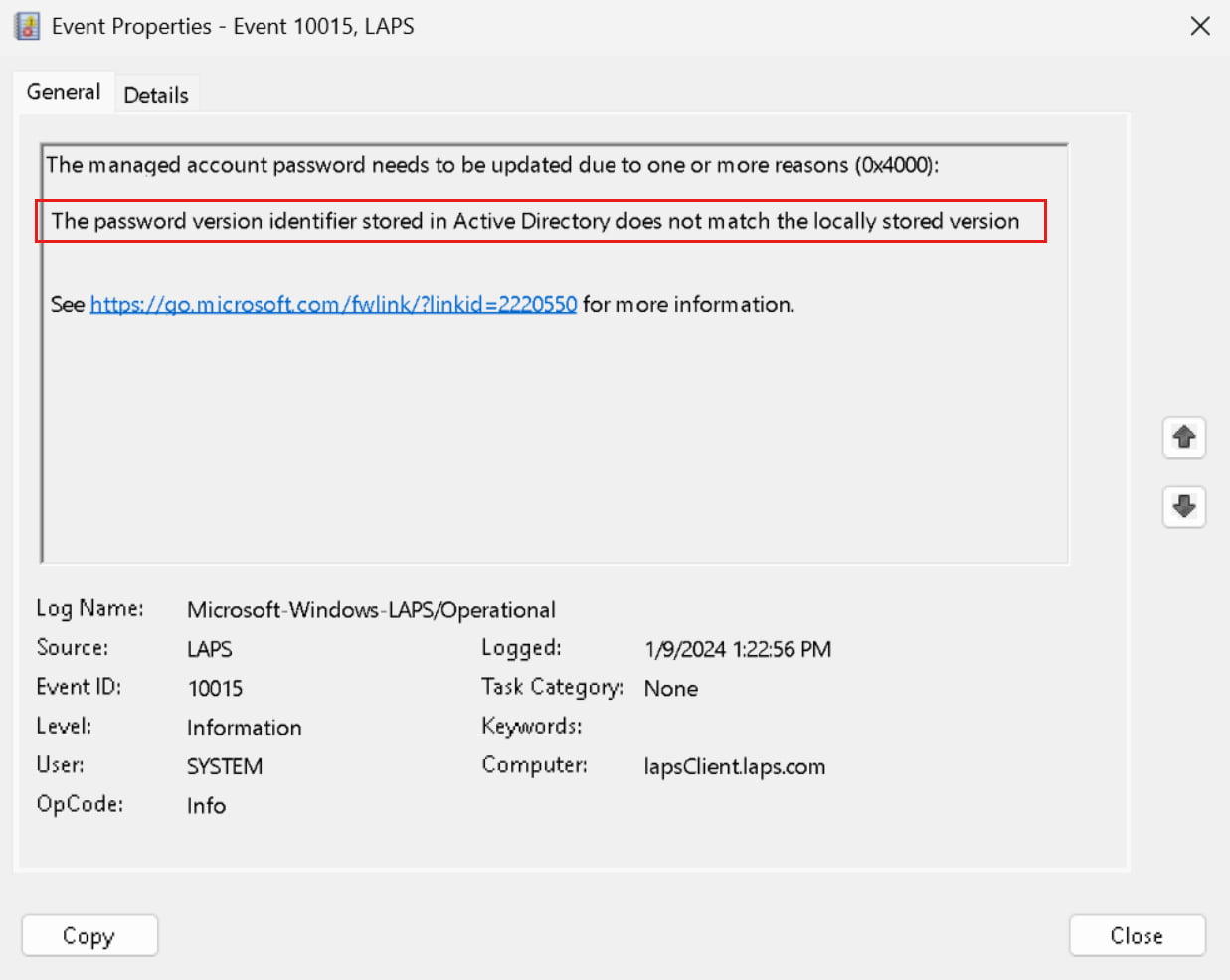
If you do not run an updated version of the PowerShell command Update-LapsADSchema, Windows LAPS will log warning 10108 in the event log but will continue to otherwise function normally.
It's important to note that enabling or configuring this feature does not require the use of additional policy settings. The function is always activated after adding a new attribute to the schema. The Windows LAPS documentation will be updated soon to provide more details about the new feature.
Changes and Improvements
Wordpad Removal
Starting with with Build 26020, WordPad is removed when doing a clean install. With Build 26040, it will now also be removed on upgrade. You can restore it manually by using this solution.
Windows Copilot
Microsoft has moved the Copilot icon to the right side of the system tray in the taskbar so that it is closer to where the Copilot panel opens. Given this change, we have decided to disable the Show Desktop feature for the far right corner of the taskbar by default. This feature can be returned in Settings > Personalization > Taskbar > Taskbar Behavior. To quickly get to this section, right-click on the taskbar and select “Taskbar Settings.”![]()
Taskbar
When you hover over the date and time in the system tray, the tooltip will now always show a clock even when you only have a single clock added.
Microsoft is expanding the options for file compression with the introduction of the "Compress To" formats for 7Z and tar. Furthermore, users will have access to a new compression wizard that provides even greater flexibility. This wizard will allow selecting from a wider range of formats and provide specific details. For instance, you can use it to compress individual files using gzip/bzip2, or include multiple files in various tar formats with different compression types. Users can also modify the compression level and determine the types of data stored within each archive.
The Windows share window has been updated to include direct sharing of URLs to popular platforms such as WhatsApp, Gmail, X (formerly Twitter), Facebook, and LinkedIn. In Microsoft Edge, you can access this feature by clicking on the share icon located at the top right of the toolbar and selecting the desired sharing option from the Windows share window.
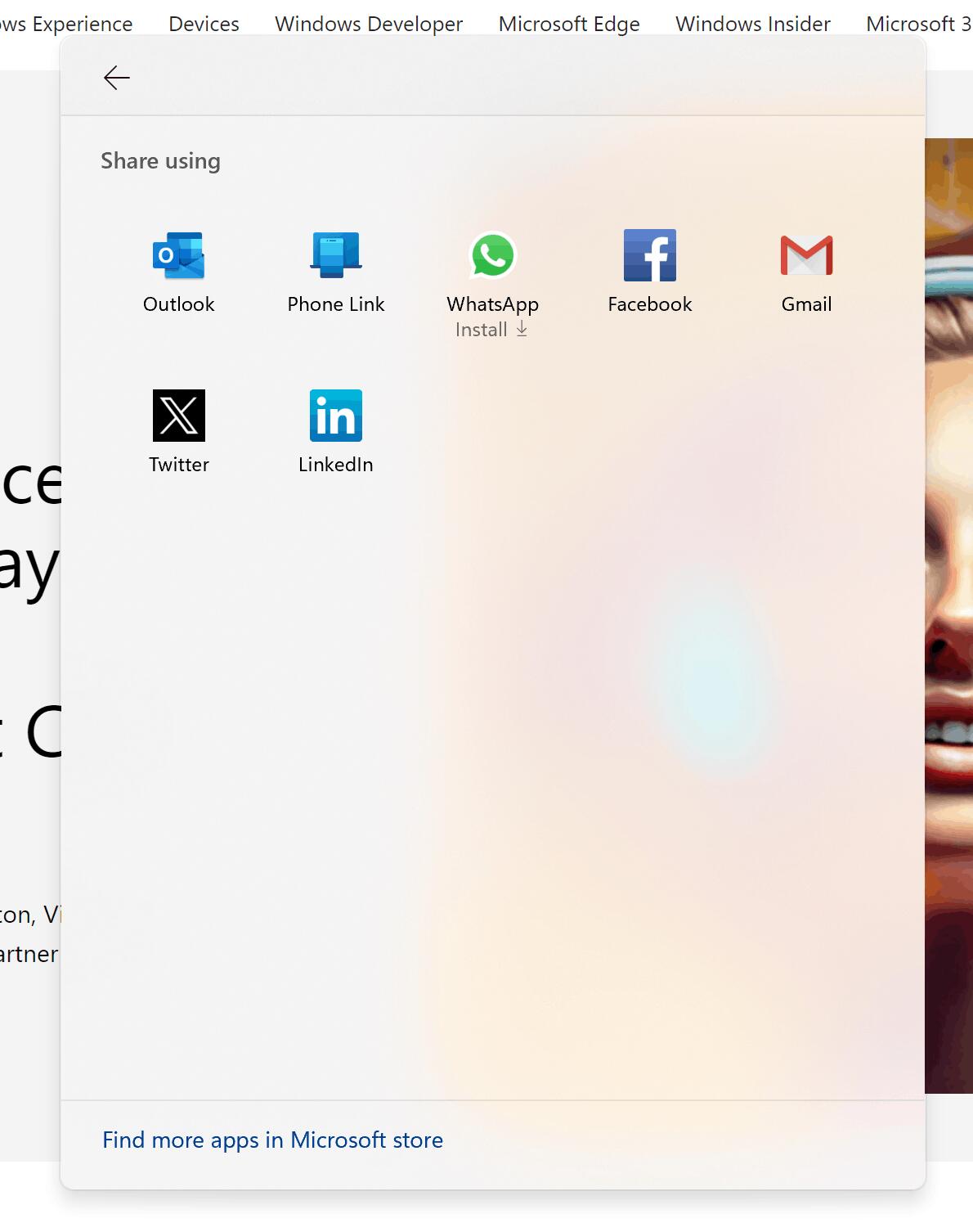
If you’re signed in with a Microsoft Entra ID, in addition to being able to share to your Microsoft Teams (work or school) contacts, you can also now share directly to specific Microsoft Teams Channels and groups chats as well directly within the Windows share window.
Microsoft has significantly improved nearby share transfer speed for users on same network. Before these changes, users had to be on the same private network but now users just have to be on the same network, which could be public or private. You can quickly turn on nearby share via Quick Settings and simply right-click on a local file in File Explorer, choose “Share”, and choose to share to a device listed under Nearby Share in the Windows share window.
Task Manager
The Task Manager now has a new icon that follows the design principles implemented in Windows 11.![]()
Narrator
- In Microsoft Word, Narrator will now alert you to the presence of a draft comment, resolved comment, bookmark, or accessibility suggestions when you read text in a document.
- Narrator users can now use Voice Access to launch apps, dictate text, and interact with on-screen elements using voice commands. With Voice Access, you can also give Narrator commands using your voice, such as “speak faster” or “read next line.” To start using this feature, search for "Voice Access" in Windows and configure the appropriate settings.
- Fixed an issue that caused Narrator to incorrectly announce the selected item in combo boxes when users tried to change a value using Control + ↑ or ↓.
- Fixed an issue that caused Narrator to speak the names of old dialog boxes even after users navigated to a new dialog box on various web pages.
- Fixed an issue where Narrator would not provide information about the control's role when using the CTRL+ALT+<arrow keys> table navigation commands.
- Fixed an issue in Microsoft Excel where Narrator would not read all the items in the AutoComplete list that appears when writing formulas.
- Fixed an issue where Narrator would not announce the status of the selected menu item in some apps, such as Device Manager.
- Fixed an issue that caused Narrator to speak both unselected and newly selected values in elements such as date fields or any table-formatted elements.
Input
- Added support for Colemak keyboard layout . To activate it, go to Settings -> Time and Language -> Language and Region, select a language based on the Latin alphabet (for example, English), click on the three dots to open the language options, and add the appropriate keyboard.
- Added a new keyboard layout for Hebrew. To use this option, go to Settings -> Time & Language -> Language & Region, select Hebrew, click on the three dots to open language options, add the keyboard you want and select Hebrew (Standard, 2018 ).
Magnifier
Fixed an issue on the Magnifier settings page where the text under the Voice Speed slider was not following color contrast guidelines.
Fixes
- Fixed an issue causing Settings to not launch for a small number of Insiders on Build 26010+. If you are impacted and aren’t yet on this build, please see this forum post for a workaround.
- Fixed a high hitting print spooler crash in the last 2 builds.
- Fixed an issue where hovering over the system tray area wasn’t bringing up the taskbar when set to autohide.
- Fixed an issue causing some users to see an increase in SYSTEM_THREAD_EXCEPTION_NOT_HANDLED bugchecks recently.
- Fixed an issue causing some insiders to see a bugcheck with BAD_POOL_CALLER in Build 26016+.
- Fixed an underlying issue related to scrollbars which was causing some app crashes in the last 2 builds.
- Made a change to help fix an issue which could cause the spacing between your desktop icons to become extremely wide.
- Fixed the issue in Widgets where announcements from the Microsoft Start feed are still shown on the taskbar after the feed is hidden.
- Fixed the issue in Widgets where spacing and fonts used in some settings pages were incorrect.
Known Issues
General
- [Reminder] Some popular games may not work correctly in Canary Channel Insider builds. When running them, a “green screen of death” (GSOD) may occur. If you notice any problems, be sure to leave feedback in the Feedback Center app.
- [New] In Build 26040, the display may appear frozen on some computers with multiple monitors. If you encounter this problem, try restarting DWM with the combination CTRL + WIN + Shift + B.
- [New] Content may not play in some Microsoft Store video streaming apps. As a temporary solution, try playing streaming video in your browser.
- Microsoft is working to fix an issue that causes an application not found message to appear when opening the Print Queue. As a workaround, you can launch the Print Queue application through the Run dialog box (WIN + R) by entering this command:
explorer.exe shell:appsFolder\Microsoft.Windows.PrintQueueActionCenter_cw5n1h2txyewy!App
Widgets
Navigation using the keyboard from widget settings pages to the main settings section does not work.
Support us
Winaero greatly relies on your support. You can help the site keep bringing you interesting and useful content and software by using these options:
